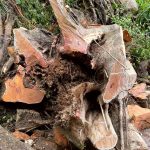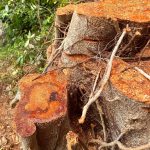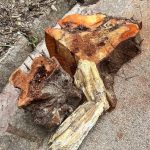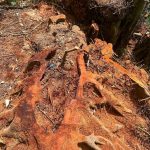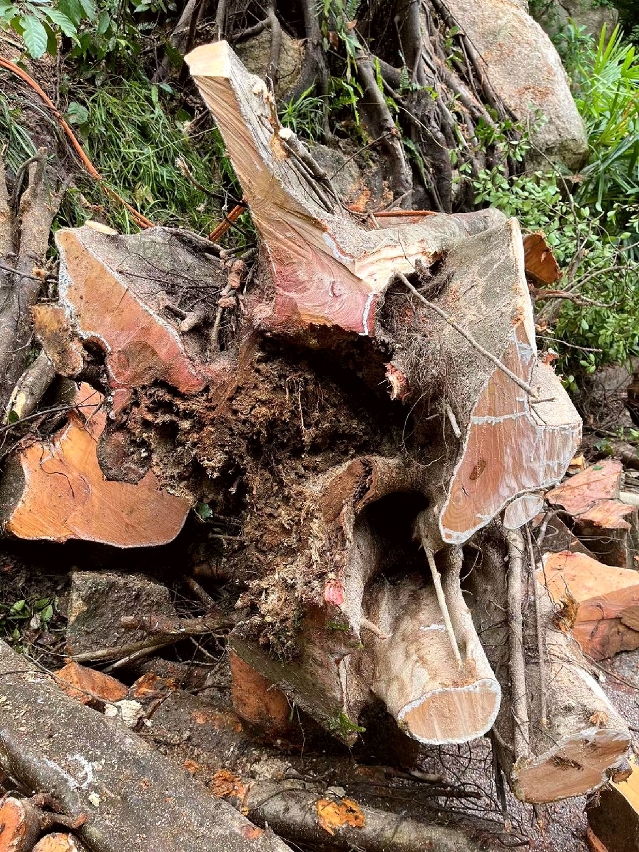 IAM endeavours to strengthen tree management and care to prevent and treat “tree cancer” brown root rot disease
IAM endeavours to strengthen tree management and care to prevent and treat “tree cancer” brown root rot disease
A Chinese banyan tree in Mong Há Hill Municipal Park infected with brown root rot disease has been removed as its roots and trunk have shown signs of severe decay. The Municipal Affairs Bureau (IAM) has proactively strived to improve the green environment in Macao jointly with experts from Mainland China. However, tree removal measures must be taken when necessary if trees suffer from severe illness or endanger public safety as there is no fungicide capable of preventing and treating brown root rot disease. Methods such as thoroughly removing infected roots, disinfecting the soil, setting up physical separation barriers are also used to stop or slow down the spread of the disease in the infected area. In Macao, brown root rot disease is the most prevalent in Guia Hill Municipal Park and Mong Há Hill Municipal Park. There have also been sporadic cases in other parks and roadside trees. IAM has continuously strengthened inspections and is committed to good tree management and care.
Brown root rot disease is a common tree disease in Macao and is caused by the pathogenic fungus Phellinus noxius. The mycelia corrode the wood, causing it to become light, dry, spongy or white and decayed. The pathogenic fungus can even damage the tissue responsible for the transportation of water and nutrients, causing the plant to lose its abilities to absorb and transport water and nutrients. As the base of the tree trunk and the roots gradually decay, the tree will completely lose the ability to support itself and will be in danger of collapsing anytime. Meanwhile, brown root rot disease can be spread through close contact with infected roots and infected tissue, posing a risk to the trees and vegetation near an infected plant. Therefore, upon finding trees infected with brown root rot disease, IAM will carry out a series of treatment measures, and remove the infected trees which have become seriously ill or public hazards if they cannot be treated.
Trees infected with brown root rot disease are divided into two types: trees which suffer from gradual withering and trees which suffer from acute withering. An infected tree suffering from gradual withering has sparse foliage, yellow fallen leaves and smaller leaves. The infected tree will become weak gradually, and it may take a few years from the onset of the infection to death. A tree suffering from gradual withering can appear to have a fair amount of green leaves in the time from the onset of the infection to its eventual death, and trees such as Chinese banyan may even maintain a large number of green leaves, making it hard to determine that the trees have already been severely ill through common observation owing to their healthy appearance. A tree suffering from acute withering will wilt quickly, and the leaves will not fall immediately after wilting. It only takes one to three months from chlorosis to death.
If the public find any abnormalities in trees, they are welcome to call the IAM Civic Service Hotline 28337676 or report to IAM through “IAM Connect”https://app.iam.gov.mo/iamconnect.


